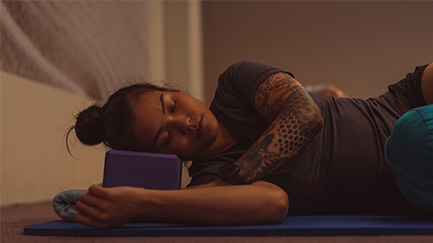Sedentary behaviour is an issue impacting on the health of individuals, as far too many people spend multiple hours a day sitting or lying down. This most commonly occurs at home watching TV, at work sitting at a desk, or travelling in a vehicle or on public transport.
Pain is often associated from staying in one position for prolonged periods of time, so we want to try and break up periods of sedentary behaviour as much as possible. On top of this, evidence suggests that sedentary behaviour is linked to an increase in in health problems, including obesity, cardiovascular disease, cancer, and type 2 diabetes. People often don’t realise that sedentary behaviour is not the same as physical inactivity. Even if you are meeting current physical activity guidelines, sitting down for multiple hours per day has negative health outcomes.
Sedentary behaviour also has a negative impact on functionality. Spending multiple hours in one day seated in the same position, the muscles tend to become short and tight, resulting in pain throughout the body, particularly through the neck, shoulders and back.
An example of this is the lower back, when seated, the back is going to round, which is perfectly fine as that’s what the back is made to do. The problem occurs when seated in that position for hours a day, week after week, and not allowing the spine to move into different positions. Movement is key to overcome this, as allowing the muscles to lengthen and stretch will help to reduce pain in the problem areas.
If you are planning on sitting down for a prolonged period, try rolling up a towel and placing it behind the lumbar spine for 30 minutes, then remove the towel and repeat throughout the day. This will allow the spine to shift into different positions and reduce occurrences of tightness in the lower back.
Key exercise points
Here are some key exercise points that will help with a reduction in pain if you spend prolonged periods sitting every day. If you’re looking for a more individualised program, it is recommended that you see an Exercise Physiologist who will conduct a thorough assessment and design an exercise intervention tailored to you.
Stretch the hip flexor muscles - sitting down shortens the hip flexor muscles, making them tight and pulling the pelvis anteriorly, potentially leading to back pain.
Strengthen the hip extensors, such as the glutes and hamstrings – often people neglect their hip extensor muscles. By strengthening the hip extensors, they will act to counter the pull of the hip flexors and help keep the pelvis in a neutral position.
Stretch your chest muscles – often when seated, particularly at a desk, the shoulders will round forward when typing, which puts the chest muscles into a shortened position. Stretching and releasing these muscles will help to take strain off the shoulders.
Strengthen external rotators – these small muscles located around the shoulders are often neglected and play a huge role in stability and scapular control. These muscles also help to counter the pull of the chest muscles.
Strategies to reduce sedentary behaviour and increase movement
Some other strategies you can use in your daily life to decrease sedentary behaviour and increase movement include:
- Limit sedentary activity such as watching TV or do so standing up.
- Use height adjustable workstations at work, which allows you to do everything you normally do seated, just standing!
- Use the stairs as often as possible, avoiding lifts and escalators where possible.
- If you can’t stand up, do some range of motion activities, such as shoulder shrugs, calf raises, ankle rotations, etc.
- Walk or ride to work/social activities – this will allow you to increase your physical activity levels and reduce time seated throughout the day.
- If you live too far away to walk or ride to work/social activities, park at a carpark further away and walk from there.
References:
Katzmarzyk, P. T., Powell, K. E., Jakicic, J. M., Troiano, R. P., Piercy, K., Tennant, B., & 2018 PHYSICAL ACTIVITY GUIDELINES ADVISORY COMMITTEE (2019). Sedentary Behavior and Health: Update from the 2018 Physical Activity Guidelines Advisory Committee. Medicine and science in sports and exercise, 51(6), 1227–1241. https://doi.org/10.1249/MSS.0000000000001935
Written by Accredited Clinical Exercise Physiologist, Jonathon Peers





